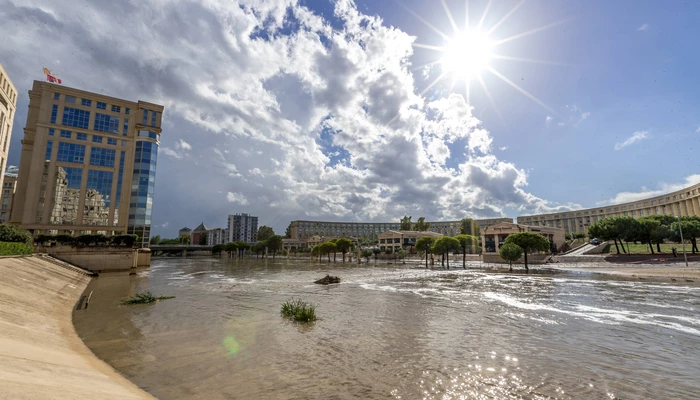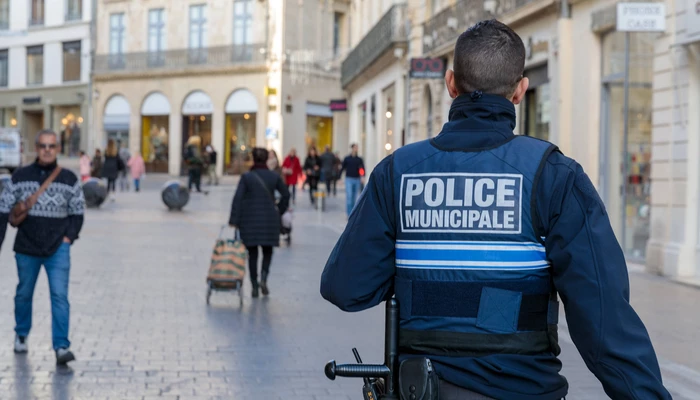Know your home, school and workplace safety plans
Many situations can lead to taking cover to protect oneself from danger.
Preparing at home
In the event of an emergency, the public authorities do their utmost to provide help, support and assistance to citizens. On the other hand, depending on the severity of the phenomenon, it can take some time for help to arrive. That's why you need to be prepared and know how to act in the event of a risk.
Sheltering
Risks or threats involved :
Instructions:
- Close all windows and exterior doors.
- Turn off all fans, heating and air conditioning systems.
- Close the outside air intake of your fireplace.
- Listen to the media (radio, TV, internet) and follow the authorities' recommendations on reference websites.
- Leave your children at school: they follow the same instructions as you.
- Take your pets indoors.
- Keep your emergency kit handy.
In the event of flooding in your home:
- Take shelter upstairs (if possible)
- Identify 1 or more safe places in your home (upstairs) or a neighbor's home.
- Prioritize a room with a skylight or window in case help is needed.
Fill out the family safety plan (PFMS)
This plan is included in the Document d'Information Communale sur les Risques Majeurs (DICRIM) and is to be filled out by you :
- Prepare your household's emergency kit,
- Draw up a list of contact details for members of your family, daycare, schools, work,
- Identify where to go in case of safety precautions or evacuation,
- Make sure you know how to turn off water, electricity and gas, if necessary,
- Make an inventory of your possessions that may be damaged, particularly in the event of flooding (photocopies of purchase invoices) to facilitate your claim with your insurer.
- If you have to leave your home: depending on the severity of the situation, your municipality may ask you to evacuate your home or stay at home for your own safety. If this is the case, take your emergency kit with you, and follow the instructions given by the authorities or the municipality on the various information channels.
Getting ready for school
According to circular n°2002-119 from the French Ministry of Education dated May 29, 2002, schools subject to a major risk are required to draw up a Plan Particulier de Mise en Sureté (PPMS).
Plan Particulier de Mise en Sureté (PPMS)
School establishments in the City of Montpellier subject to a major risk must carry out a Plan Particulier de Mise en Sureté (PPMS) in accordance with the instruction of April 13, 2017 (relating to the reinforcement of safety and crisis management measures applicable in schools and educational establishments).
This plan, specific to each establishment, is intended to deal with all situations when a major accident occurs. The school principal or the head of the establishment (collège or lycée) must implement the necessary organization to safeguard the people (students and staff) present in the establishment before the arrival of the emergency services.
The implementation of the PPMS must enable:
- Triggering the alert in a very short time and with means adapted to the establishment.
- Follow precise instructions, such as: go to the specific gathering places provided for safety purposes, list those present and absent, follow the evolution of the situation and the safety instructions to be followed by listening to or watching the defined sources of information (France Bleu Hérault radio....), continue to supervise pupils...
- Determine one or more safety locations based on established criteria: ease of access, location (first floor in the event of flood risk), shelter or possible confinement...
- Trames and practical sheets are available on the Accolad intranet and provided by the Département de l'Hérault and the Académie de Montpellier.
Getting ready for work
Prepare your Business Continuity Plan (BCP)
The business continuity plan becomes your reference tool when an incident occurs.
The benefits of a BCP:
- Protect the lives of employees and company assets;
- Limit material and financial losses;
- Ensure the continuation of essential activities with the aim of preserving the company's revenue and reputation, and facilitating a return to normal.
- Represents a competitive advantage, as you'll be able to maintain operations even in the event of an incident.
- Meets the expectations of customers requiring a formal business continuity plan.
Preparing your Plan d'Organisation et de Mise en Sureté d'un Etablissement (POMSE)
A major accident can lead to an exceptional situation that leaves the community of a company or establishment receiving the public (ERP) alone and isolated for some time in the face of the disaster (no telephone, power cut, delayed intervention by emergency services, etc.).
Large-scale accidents can also lead to the loss of all or part of your business.).
The aim of the POMSE is to make it easier for the head of the establishment to put in place an internal procedure specific to the establishment, to guarantee the safety of the public and employees in the event of a major event (flood, earthquake, industrial accident, meteorological event...).
.Shelter by car
- If you're very close to home, your office, or a public building, get inside immediately. Follow the same recommendations described above.
- If you can't get into the nearest building, park your vehicle in a safe place.
- Cut the engine, close the windows and the air conditioning to prevent air from entering your vehicle.
- Listen to the radio to follow the authorities' recommendations.
- Stay where you are until the authorities allow you to leave.
Evacuation and emergency shelters
Centres d'Accueil et de Regroupement (CARe) are located throughout Montpellier and are activated in the event of a major event for the reception and emergency accommodation of disaster victims.
Equipment is made available to you (cot, comforter, hygiene kit, etc...). However, so as not to be caught unprepared at the time of a possible evacuation order from the authorities, please prepare your emergency kit in advance, in an easily transportable bag.
Map of defibrillators in Montpellier
External Automated Defibrillators (AEDs) are portable, self-contained devices that deliver an electric shock when a person is in cardiorespiratory arrest.
They are installed in targeted, high-frequency public facilities: gymnasiums, sports fields, Zoo, Maisons pour tous.... To date, 50 defibrillators have been referenced in Montpellier's municipal structures.
3 gestures to save a life

- Allocate help: call 15 (SAMU)
- Describe the situation
- Give the precise address (number, street, building code, floor....)
- Don't hang up until your caller tells you to
- Perform cardiac massage
- Use the defibrillator



